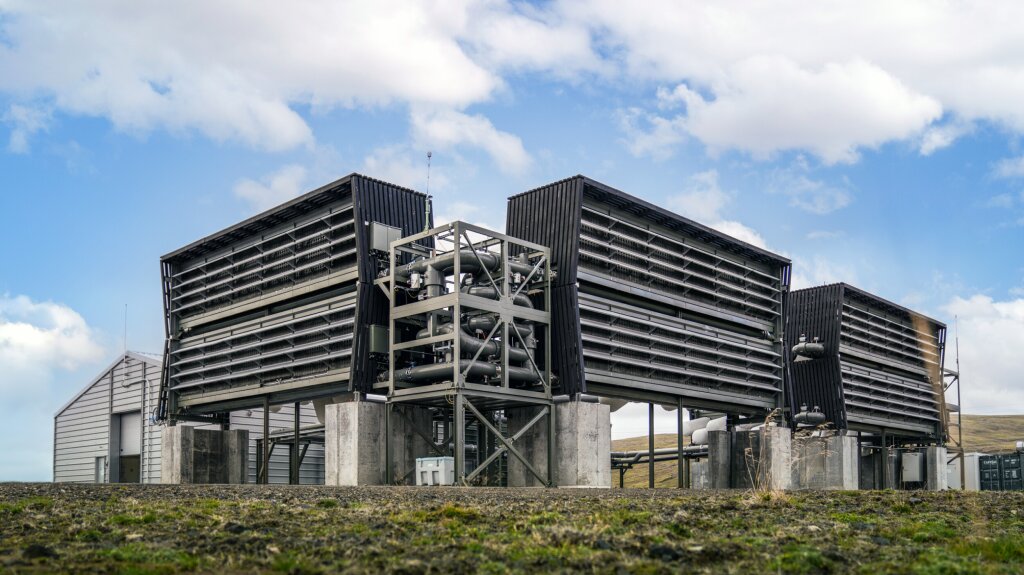The U.S. Department of Energy (DOE) announced today a $1.2 billion investment in two groundbreaking facilities—one located in Texas and the other in Louisiana—that will utilize direct air capture (DAC) technology to remove millions of tons of carbon dioxide (CO2) from the atmosphere each year.
This investment is part of a broader $3.5 billion initiative established by last year’s Bipartisan Infrastructure Law, representing the first major global governmental support for this emerging carbon capture technology.
The initiative aims to develop four DAC hubs over the next decade, each with the capacity to remove and store at least 1 million tons of CO2 annually.
As part of this rollout, the DOE has also allocated funds for 19 additional conceptual and engineering studies for potential future DAC plants.
“This is a bold investment in a technology we believe will be essential in the future,” said Sally Benson, a geochemist at Stanford University.
However, the strategy has its critics. Mark Jacobson, an atmospheric scientist at Stanford, describes the program as “a boondoggle” and “a complete waste of money.”
He argues that DAC is one of the most expensive and inefficient methods for carbon sequestration due to the significant energy required to capture, purify, and store CO2.
Jacobson suggests that a more effective climate strategy would be to invest in accelerating the development of renewable energy to more quickly phase out coal and natural gas power plants.
Proponents of DAC counter that despite global investments exceeding $1 trillion annually in clean energy technologies, these efforts alone may not suffice to meet carbon reduction targets.
The Intergovernmental Panel on Climate Change (IPCC) estimates that DAC and other negative emissions technologies must capture approximately 1 billion tons (or 1 gigaton, GT) of carbon annually by 2030 to limit global warming to 1.5°C above preindustrial levels. By 2050, this figure may need to reach up to 20 GT.
Human activities currently contribute around 38 GT of CO2 to the atmosphere each year. “We need a massive amount of carbon removal,” says Julio Friedmann, chief scientist at Carbon Direct. “We can’t achieve our targets without it.”
While natural systems like forests and agricultural lands are expected to contribute significantly to carbon removal, their capacity is limited by land availability and growth rates. “DAC is a backstop technology,” Friedmann adds.

Katie Lebling, a carbon removal expert at the World Resources Institute, points out that compared to natural carbon removal strategies, DAC plants require minimal land, allow precise measurement of CO2 capture, and are more likely to achieve permanent carbon sequestration.
Currently, there are 130 DAC plants in development worldwide, with 27 commissioned and 18 completed, according to the International Energy Agency. These facilities are small-scale, with a combined CO2 removal capacity of about 11,000 tons annually.
The newly announced facilities are on a significantly larger scale. The Texas plant, to be developed by Occidental Petroleum, will use a technology from Carbon Engineering that employs solar energy to power fans that direct air over liquid sorbents.
These fluids absorb CO2, which is then released and either used commercially or stored underground. Initially, this plant will capture and sequester 1 million tons of CO2 per year, with a future capacity of up to 30 million tons annually, according to Occidental Petroleum’s president, Vicki Hollub.
The Louisiana facility, operated by Battelle, will use technology from Climeworks and Heirloom to capture CO2 with solid sorbents, which is then released and pumped underground. Both technologies have been tested in pilot plants and are considered “mature,” according to Benson.
This scale-up should reveal new opportunities for cost savings. DOE Secretary Jennifer Granholm noted at the press conference announcing the new facilities that “the hubs are going to help us prove out this potential game-changing technology.”
Friedmann and other DAC supporters recognize that the current cost of DAC is high. Most estimates suggest that removing CO2 costs “north of $1000 per ton,” according to Sean McCoy, a carbon life cycle expert at the University of Calgary.
The DOE’s Carbon Shot program aims to reduce this cost to $100 per ton within 10 years.
Friedmann believes that the DOE’s $3.5 billion investment in DAC hubs is crucial for scaling up the technology from research and development to full commercial deployment.
“This is what drives you down the cost curve,” he says. He also notes that a tax credit, 45Q, was increased last year to $180 per ton of CO2 sequestered, providing an incentive for companies to adopt the technology.
Financial incentives for DAC and other carbon storage options have also been introduced by Canada, the European Commission, and the United Kingdom.
Despite the potential for scaling up to reduce costs, Robert Howarth, a biogeochemist at Cornell University, is skeptical about DAC’s future success, citing the difficulty of capturing low-concentration CO2 from the air. “I’m skeptical that direct air capture is really going to take us anywhere,” he says.
Nonetheless, McCoy argues that investing in DAC now could yield future benefits.
“It’s clear that removing carbon after the fact is much more expensive than mitigating it today. But we need to determine if there is a learning curve here.” If so, he adds, now is the time to start.







Leave a Reply